Olivier Baroin, an expert in the jewelry of Suzanne Belperron, shares how he identifies and values the jeweler’s unsigned works.
The French Olivier Baroin is a specialist in the jewels of Suzanne Belperron (1900-1983). He can authenticate and evaluate any piece by the sought-after jewelry designer who imagined and produced wonderful jewels for well-known customers such as Wallis Simpson, Duchess of Windsor.
What distinguishes the style of Suzanne Belperron?
After winning first prize at the School of Fine Arts in Besançon in 1918, Madeleine Suzanne Vuillerme began her brilliant career in 1919, when she moved to Paris to work alongside Jeanne Boivin at barely 19 years of age. Madame Boivin had hired Suzanne as a designer, filling a void left by the death of René Boivin. In 1923 she rose to the position of codirector at Maison Boivin. However, 13 years later, Suzanne became frustrated that her designs at Maison Boivin were not attributed to her. In February 1932, she resigned, leaving behind an indelible imprint. The “Belperron style” was ingrained in the DNA of the house. Her singular voice translated into creations with clean lines, which were sensual and, at times, even carnal. Using colored stones, which she chose for their beauty rather than their value, she created jewelry that was at odds with the angular, platinum and diamond-set jewels that dominated jewelry design at the time. Suzanne Belperron was an outstanding colorist and she created bold, avant-garde jewelry: Her designs revolutionized the world of adornment, using new materials in proportions that sometimes seem excessive! Her jewelry, though somewhat exuberant at times, always remained elegant, because her creativity never exceeded the limit of good taste. This is the key to the Belperron mystery.

What was her contribution to the history of jewelry?
Suzanne Belperron has revolutionized the world of jewelry, just like Coco Chanel did for couture. This is undoubtedly one of the reasons why Karl Lagerfeld was so passionate about Belperron. Her style is in itself incomparable, because she had an innate gift for understanding proportions, assembling materials and playing with marriages of colors. She could afford to shake up the “old codes” of classic jewelry: Madame Belperron had taste! Also, she didn’t need to follow ancestral rules to create. Her compositions — as harmonious as they are unusual, as chic as they are avant-garde — were intended for independent, emancipated women, free to wear whatever they liked whenever they wanted. These jewels were designed by a modern woman for modern women. Throughout her career, from 1932 to 1971, you will also notice that her jewelry continually appeared on the cover and pages of influential international fashion magazines (such as Le Figaro Illustré, Femina, Vogue or Harper’s Bazaar), as well as the pages of the international press such as L’Express, the Herald Tribune and the Toronto Star, to name but a few. Unlike most major jewelers, she never considered it necessary to sign her pieces, with the sole motto: “My style is my signature.” This maxim is as true today: Wearing a Belperron jewel is the nec plus ultra; it’s a style, an allure, a recognizable chic without needing to display any signature. The soul and the spirit of Belperron is so evident in her creations that it renders them inimitable. The strength of her incredible talent has ensured that Suzanne Belperron is considered among the most modern and enlightened female figures of the 20th century and is still among the most sought-after jewelers in the 21st.
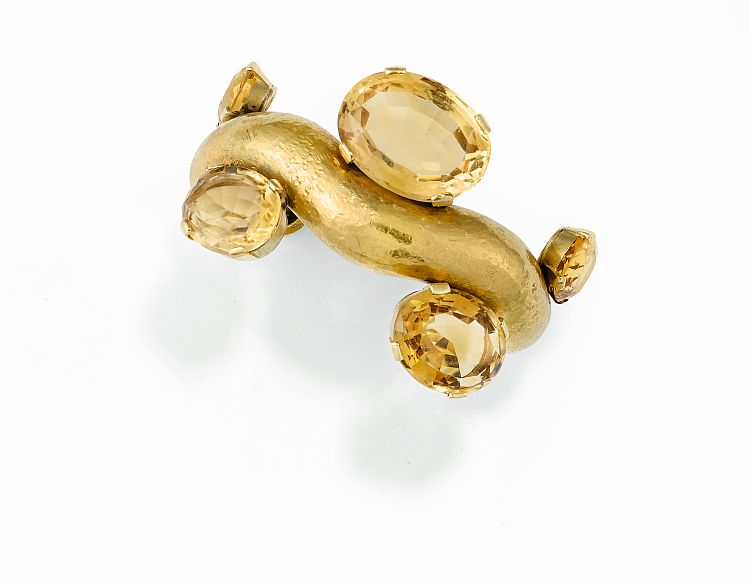
What are her most iconic creations and the most innovative use of materials?
All of Suzanne Belperron’s creations are iconic simply because they are unlike any others. Each embodies the strong identity of the designer, which explains their allure in the market. As soon as we put things in context, we understand that it was unusual in the 1930s to compose a setting with stones described at the time as “semiprecious,” precious and/or sometimes even ornamental, or to use mineral, vegetable or animal materials. From the wooden ring surmounted by a sapphire to the ivory brooch embellished with coral, to the famous monumental butterfly set with emerald and diamond cabochons — all of her creations are hugely innovative. In addition to the generous volumes and atypical setting techniques, she was particularly fond of certain materials such as chalcedony, blonde agate and rock crystal, and, of course, gold — often golden yellow, unpolished and hammered, and which she described as “virgin gold,” like the gold of the Scythians. Everything set her apart from other jewelers.
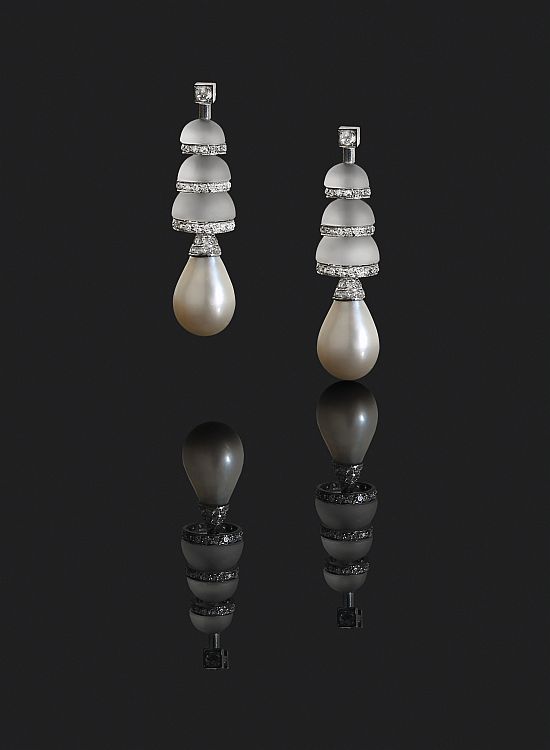
Can you explain to our readers the importance of these Belperron archives and what they tell us about Suzanne’s story?
According to a rumor, Suzanne Belperron had burned all her archives, but it was only a legend…
Discovered in December 2007, her personal effects lay untouched in an apartment located at the foot of the Montmartre, which had remained closed since her death in 1983 — 24 years earlier. Her furniture, her library, her sources of inspiration, her whole life was piled up pell-mell. Among a multitude of drawings, sketches, models, plasters, correspondence and personal photos, were numerous countersigned press articles and her order books, in which she personally detailed, in her own hand, commissions and appointments with clients from 1937 to 1974. Across these pages appear names from the main courts of Europe, the world of arts, fashion, high society and of finance — it is a sort of Almanach de Gotha of the whole world. The clients all came to Paris to seek the one that was considered the most talented jewelry designer of her time.
Traceability of customers and orders is of paramount importance in terms of authentication, especially since her jewelry — so sought after today — was never signed. Her order books comprised 7,500 pages, detailing the names of 6,730 customers that appear in approximately 45,000 appointments. The use of these documents allows me to trace the origin of a piece of jewelry, identify customers and authenticate any piece of jewelry that — either for technical reasons (hard stone jewelry) or because of the wear of time — would not include any workshop hallmarks. An unauthenticated piece of jewelry can achieve a few hundred euros, while the same piece of jewelry accompanied by a certificate can achieve a price of tens of thousands of euros. So it is of vital importance to have each piece referenced and certified.
For example, a Belperron silver ring set with semiprecious stones was sold at auction in Paris in November 2017. Due to a lack of attribution the auction house gave the piece an estimate of EUR 600 to EUR 800 ($700 to $940). It was sold for EUR 3,700 ($4,400). A few months later, its buyer entrusted the ring to my expertise and to allow me to research it in the archives. I was able to authenticate the ring and produce a certificate. In October 2018, the ring was sold again in Neuilly, this time accompanied by my certificate, with an estimate of EUR 8,000 to EUR 10,000 ($9,400 to $11,800). It was sold for EUR 75,000 ($88,400).
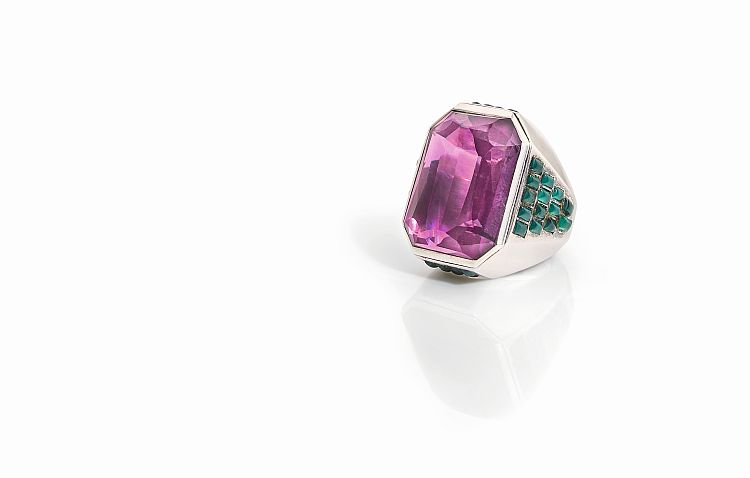
How has the appreciation of her pieces evolved with collectors?
The truly exceptional pieces hardly ever appear on the market (apart from a few instances such as those that appeared in the Duchess of Windsor sale). The Belperron market is made up of erudite, sometimes capricious collectors who desire exclusivity. There are strong parallels with the market for paintings: When a Picasso has been “seen” on the market before, fewer great collectors are interested in it. Conversely, the discovery of an unseen piece results in a fervor. Therefore, if a piece of Belperron has been seen by the general public (either at auction, a show or as a result of publicity), it is considered “seen” and therefore far less coveted.
From my experience as an expert, great collectors prefer to buy pieces privately and exclusively. Thus, when a piece is entrusted to me for sale, no photo is circulated; a potential buyer is contacted, he travels to Paris to see the jewel in person based on a summary description (without even knowing what he will discover) and the deal is usually concluded within a few minutes.
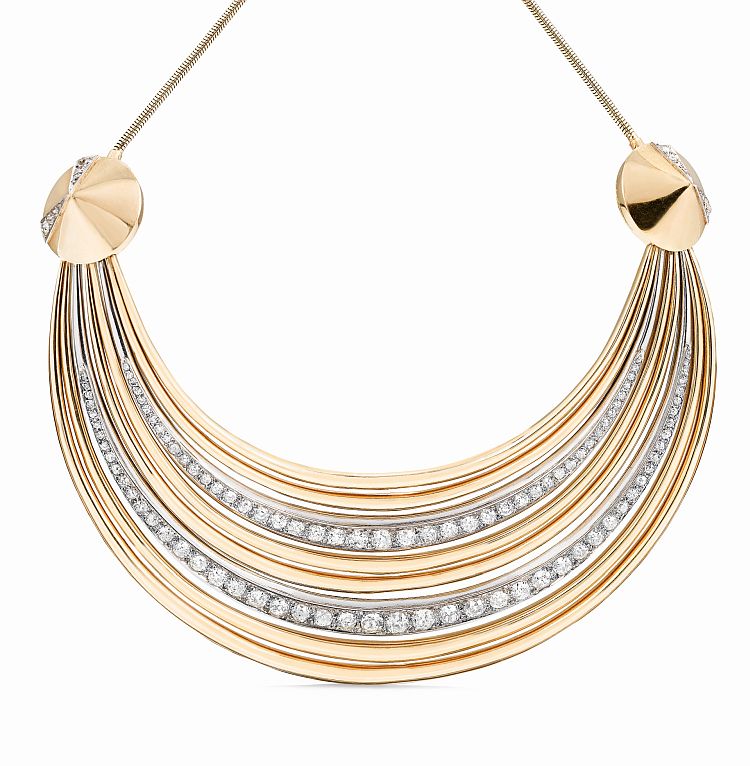
For a collector, what is the price difference between a piece designed during Suzanne’s lifetime and jewels by the current owner of the house?
I am an expert in antique jewelry, and as such my focus remains on antique jewels. The techniques and processes used in producing modern CAD-derived [computer-aided design] jewelry cannot be compared to that of the older pieces, which were often made for a private commission and custom made by hand. It is important to specify that Madame Belperron’s process almost always began with a hand-painted design of the jewel, which took into account the morphology of her client, as well as the specific selection of stones for that piece and the client.
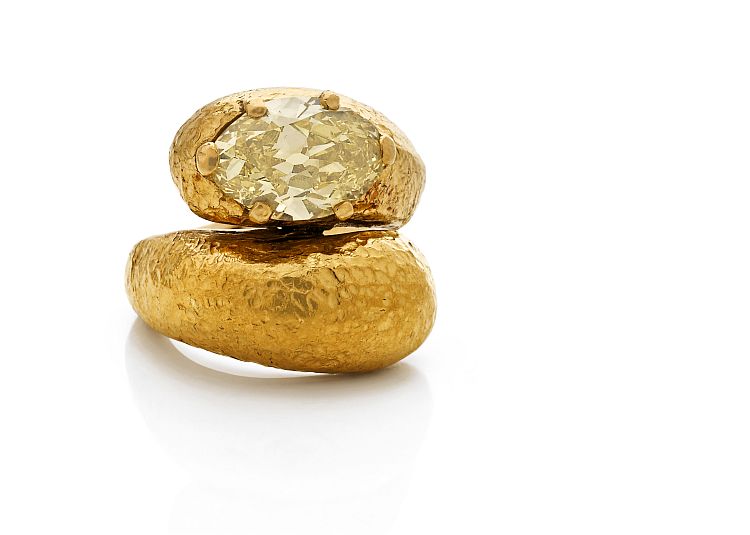
What does the future hold for Belperron pieces in the auction/secondary market?
The auction results for her iconic pieces remain exceptional; the general rule of thumb is the more interesting the piece, the higher the price. What is less attractive now in the market are the more common pieces: those that have already been seen or the later pieces (1970-1983) — the appetite and the taste of buyers has become increasingly acute. The market for Belperron has certainly reached highs, but if the archives are to be believed, at the bottom of some chests are still sleeping literally spectacular pieces which without doubt assure us of stratospheric results.
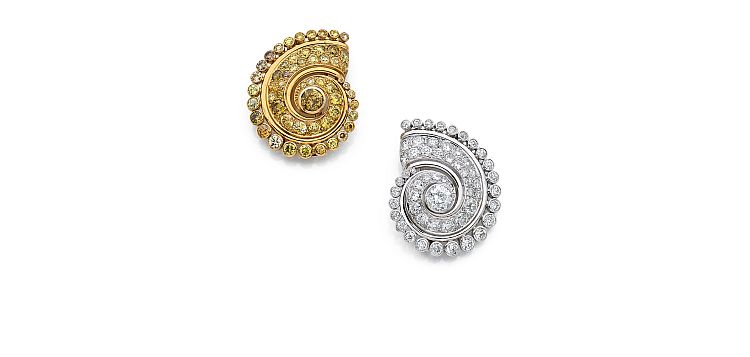
Pair of ‘Spire’ clips, one in 18-karat white gold and platinum set with a half-cut diamond and brilliant cut diamonds, the second in 18-karat yellow gold set with yellow, brown or madeira diamonds. Circa 1938-39. Hallmark of Groené & Darde, with a certificate from Olivier Baroin. Estimated at EUR 40,000-50,000, it sold for EUR 105,920 in July 2016. Image: Artcurial.
Can you give us some advice for those who want to start collecting Belperron jewelry?
I think the brooches are among the most iconic pieces in Suzanne Belperron’s canon. What could be more chic, more elegant, more refined than wearing one of her sublime brooches on the lapel of a jacket or atop one’s shoulder? For a woman, and for a man, to wear Belperron is to display a spirit, it is to represent the artist while imbuing her style. Mr. Lagerfeld was probably her biggest advocate in this regard.
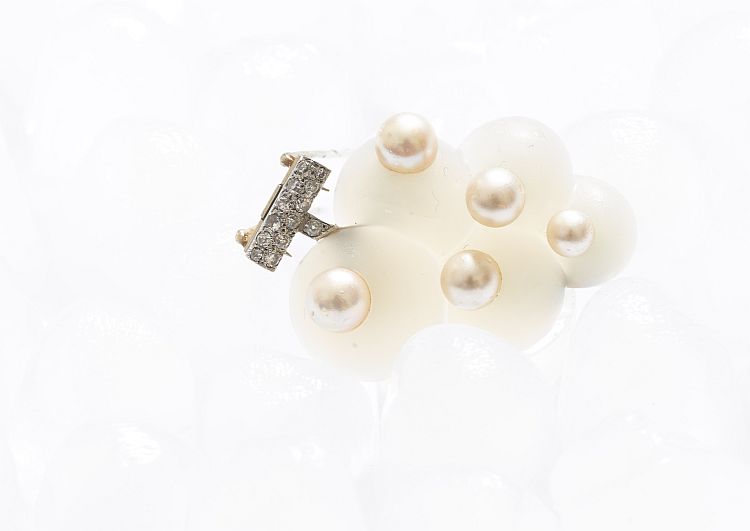
Estimated at EUR 18,000-20,000, it sold for EUR 48,884. Image: Artcurial.
WHO IS OLIVIER BAROIN?
“My passion for jewelry began when I was barely 15, while at school and preparing to take my French baccalaureate. To my father’s dismay, in 1983 I decided to drop out of high school to enroll at the Haute Ecole de Joaillerie at the rue du Louvre in Paris. I graduated as a jeweler in 1987, and when I was 18 I started working as a bench jeweler for large workshops such as Pery. Around the same time, I took art-history courses, which enabled me, years later, to establish myself as an antique jewelry dealer in the 16th arrondissement of Paris.
Once I began to work for myself, I undertook the whole process of creating jewels for an elite clientele: I drew the designs and executed the pieces. I gradually became familiar with old techniques and began to specialize in the restoration of antique jewels held in private collections, as well as restoring objets d’art.
In 2001, I joined the European Chamber of Expert-Advisors in Fine Art. Unexpectedly, in 2007 through an estate I discovered the archives of Suzanne Belperron in a Parisian apartment located in Montmartre. At the time I knew little about this artist who was said to be ‘the only designer who can afford not to sign her works, her style was simply unbeatable.’ I was able to discover some of her pieces at my friend Miriam Mellini’s, who is a dealer [and] a trader in pearls and diamonds, and whose wealth of knowledge extended far beyond jewelry designers and gemstones. It was at Miriam’s home that I discovered the Duchess of Windsor’s jewelry sales catalogue.
On September 23, 2008, the archives, having been rediscovered in the Montmartre apartment (including all of the creator’s personal effects, and the famous day-to-day appointment registers from 1937 to 1974), were the subject of a contract of assignment under private signature, for my benefit, by the universal legatee of Mrs. Belperron. In this contract recorded at Versailles on October 1, 2008, the heir mandated me to perpetuate — among other things — ‘[…] the future of the expertise of all of the creator’s work.’ In 2011, I authored, along with Sylvie Raulet, the first monograph on Belperron, which was born out of a desire to make accessible the largest possible amount of information and insight into the work of the designer. In 2012, I joined the French Union of Experts as a specialist for Suzanne Belperron.”
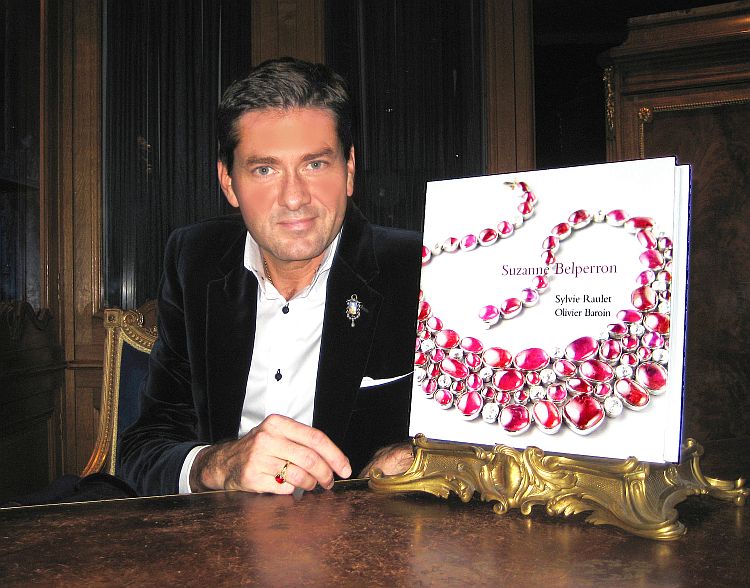
Main image: Suzanne Belperron. Image: Olivier Baroin.

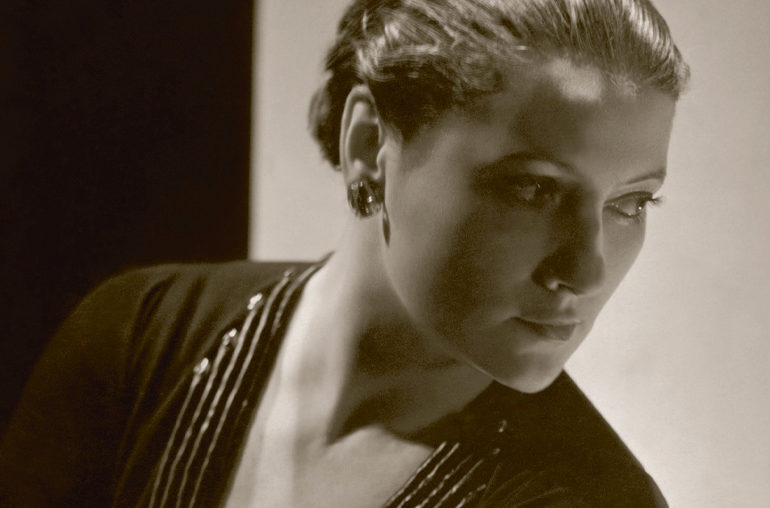
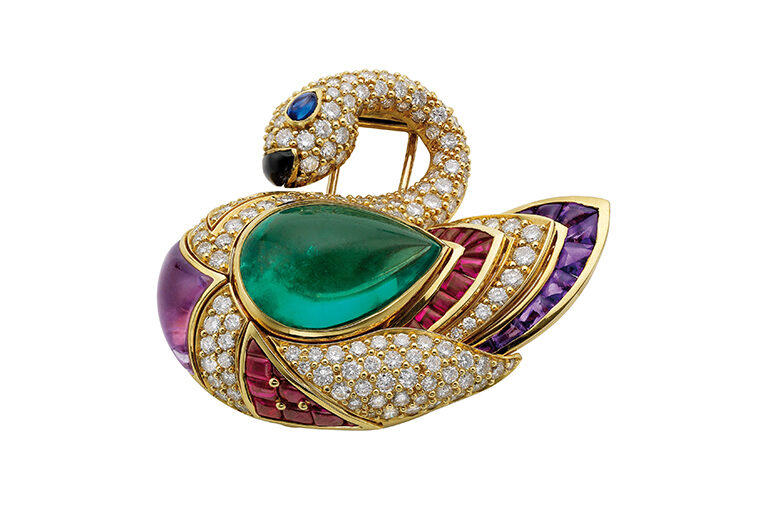
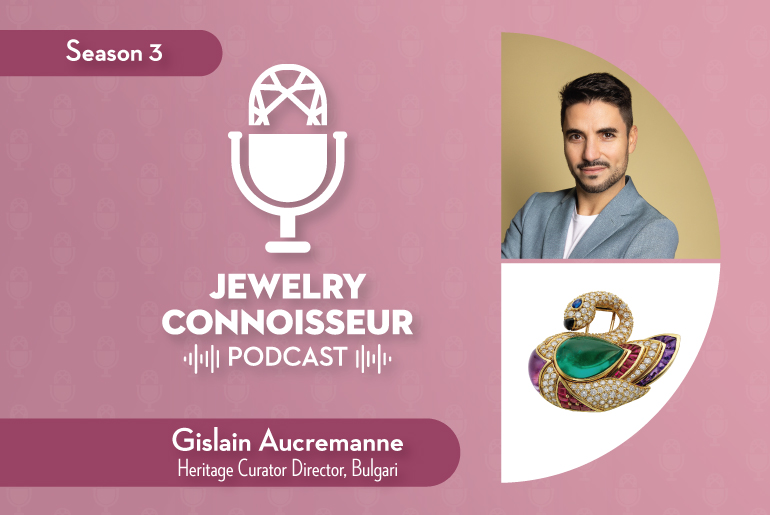
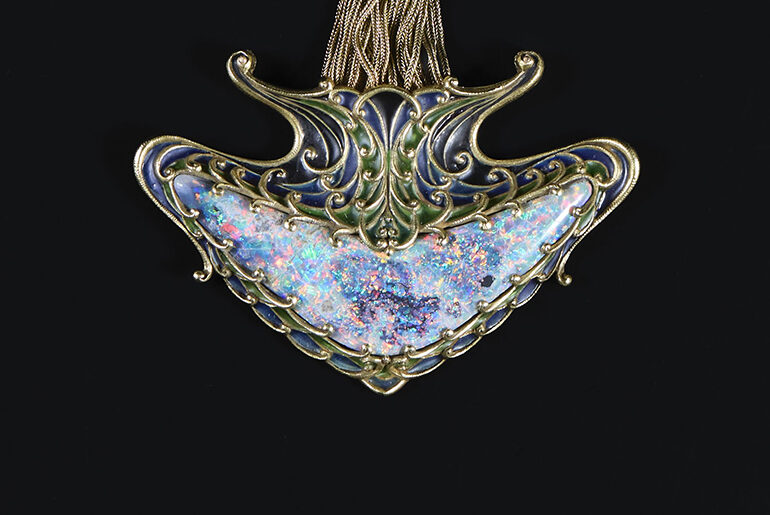
3 Comments
Great post. I am dealing with many of these issues as well..
This is the ideal blog site for anyone who wants to find out about this topic. You realize a lot its practically tough to say with you (not that I really would want?HaHa). You absolutely placed a new spin on a topic thats been blogged about for years. Fantastic stuff, simply great!
Thank you for the great article. I also appreciate your responses to the questions posed.